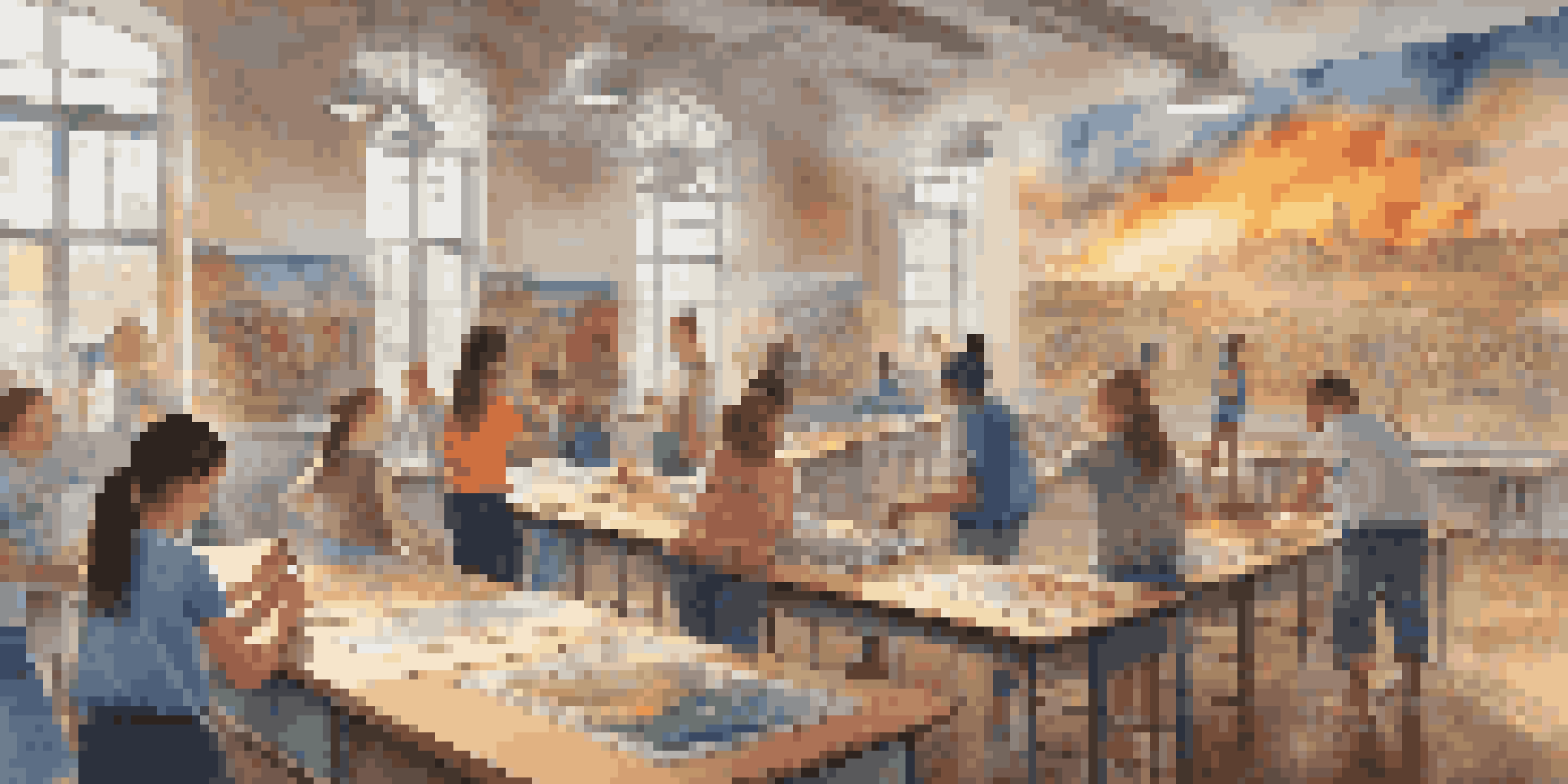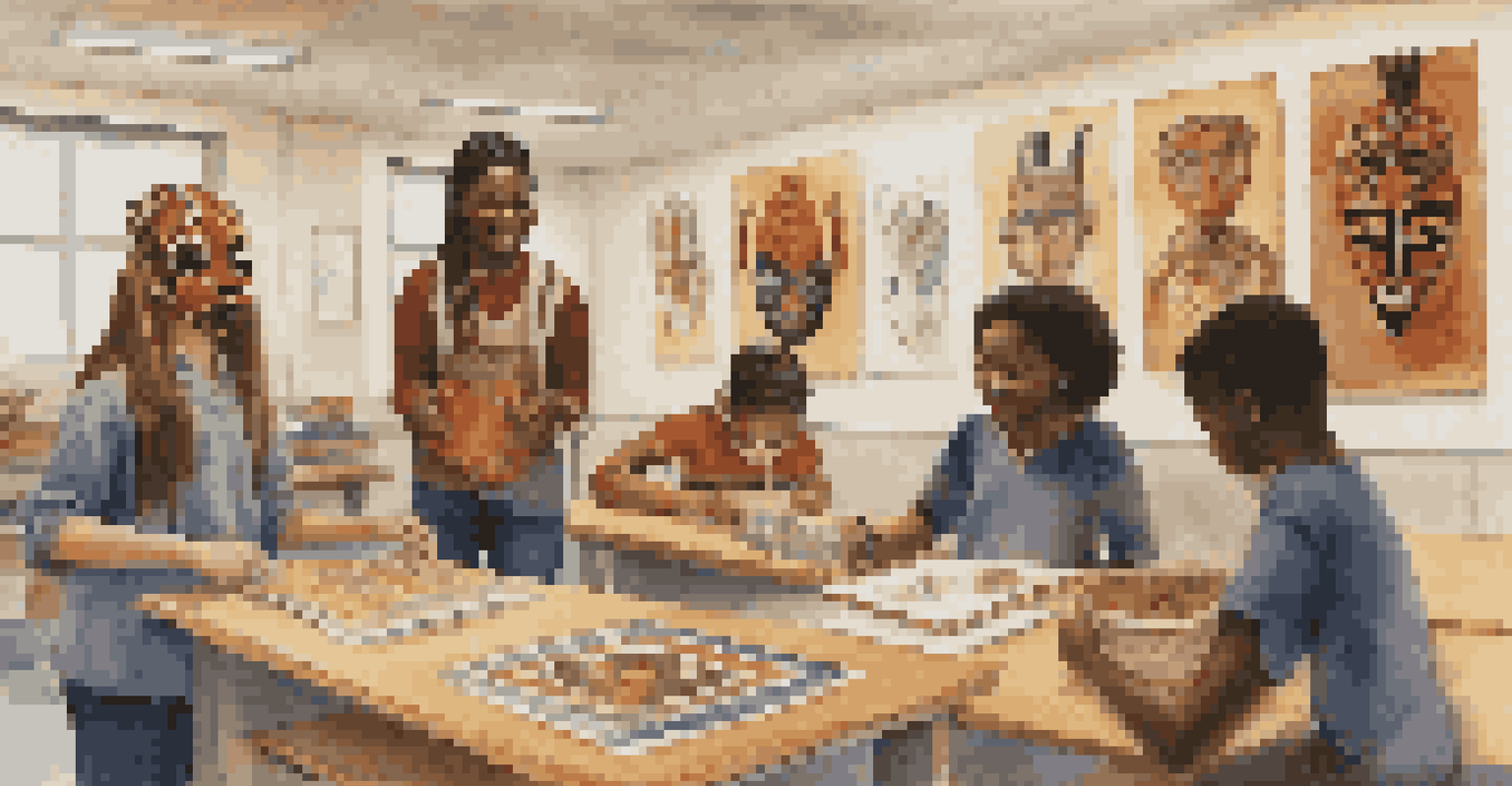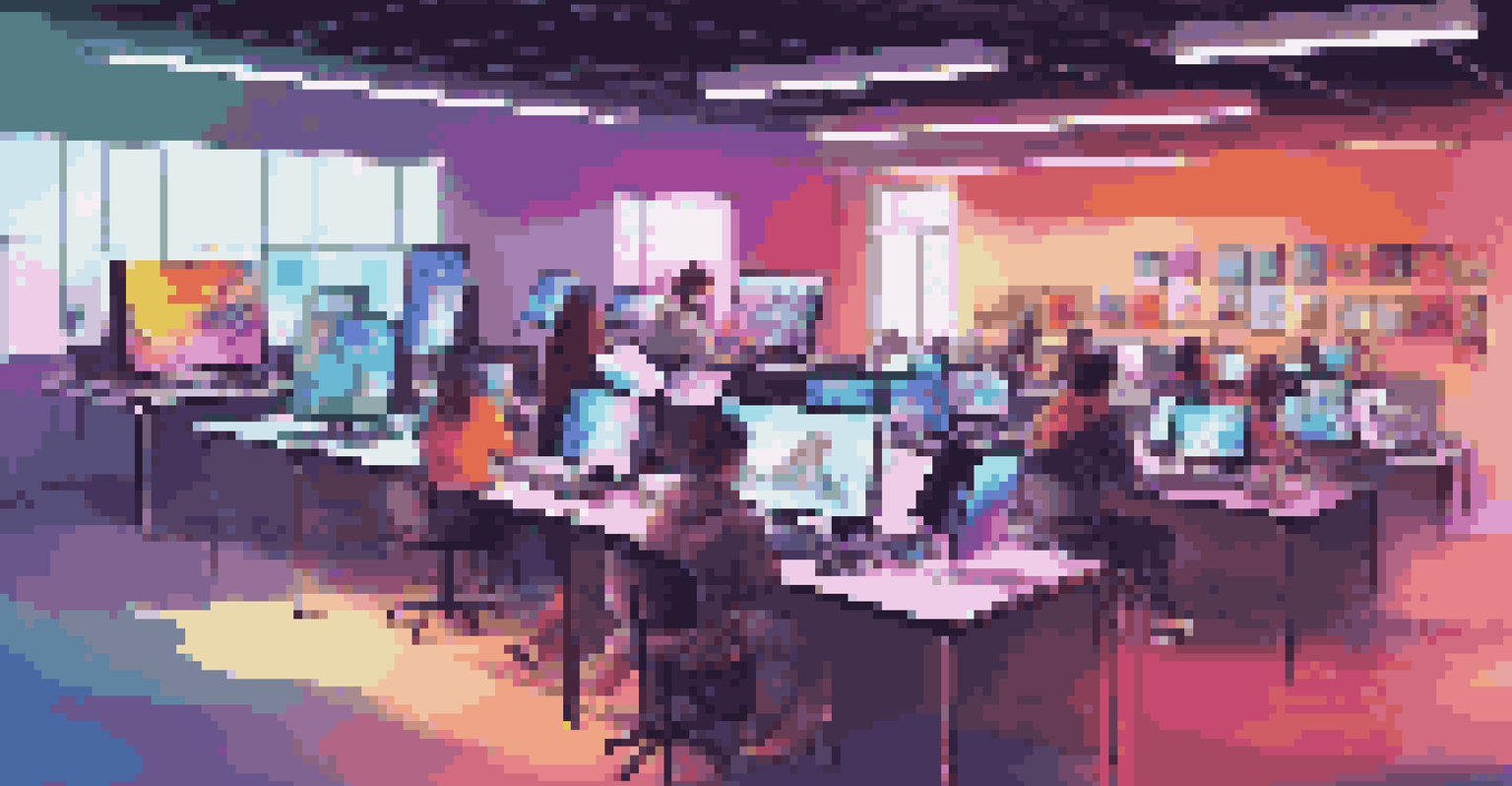Art as a Tool for Education: Shaping Cultural Awareness

Understanding the Role of Art in Education
Art has long been a valuable tool in education, serving as a medium for expression and creativity. By integrating art into learning, educators can engage students in ways that traditional methods might not. This approach not only makes lessons more enjoyable but also helps students grasp complex concepts through visual and tactile experiences.
Art is the most beautiful of all lies.
For instance, when students create a mural depicting historical events, they actively participate in learning, allowing them to absorb the material more effectively. This hands-on experience fosters a deeper understanding and retention of information. In this way, art transforms education from a passive experience into an interactive journey.
Moreover, art encourages critical thinking and problem-solving skills. As students make choices about colors, materials, and themes, they learn to express their ideas and perspectives, which is essential for their overall development.
Fostering Cultural Awareness Through Artistic Expression
Art is a reflection of culture, and incorporating diverse artistic forms into education allows students to explore and appreciate different perspectives. This exposure is crucial in a globalized world, where understanding various cultures fosters empathy and respect. By studying art from different cultures, students can see the world through the eyes of others, expanding their worldview.

For example, a lesson on African art can lead students to understand the cultural significance of masks, textiles, and carvings. This not only educates them about art history but also opens discussions about the traditions and values of the communities from which these artworks originate. Such lessons can be eye-opening, fostering a sense of connection with people from diverse backgrounds.
Art Enhances Learning Engagement
Integrating art into education transforms lessons into interactive experiences, fostering better understanding and retention of complex concepts.
By engaging with different cultures through art, students are encouraged to celebrate diversity rather than view it as a barrier. This cultural awareness is vital in building a more inclusive society, where differences are acknowledged and embraced.
Art as a Bridge for Communication and Connection
In many cases, art serves as a universal language that transcends barriers of language and geography. It allows individuals to express feelings and ideas that might be difficult to articulate otherwise. This aspect of art can be particularly beneficial in educational settings, where students from various backgrounds come together to learn.
Every child is an artist. The problem is how to remain an artist once we grow up.
For instance, collaborative art projects can help break down social barriers among students. When they work together to create a piece of art, they share their experiences and perspectives, fostering a sense of community. This connection can lead to improved relationships and a more cohesive learning environment.
Therefore, incorporating art into education not only enhances individual expression but also promotes teamwork and understanding among peers. In this way, art plays a crucial role in building bridges between different cultures and fostering a supportive educational community.
Enhancing Empathy Through Artistic Engagement
Art has a unique ability to evoke emotions, making it an excellent tool for developing empathy in students. When learners engage with art, whether by creating it or interpreting it, they are invited to step into someone else's shoes. This experience can lead to a greater understanding of the human condition and the challenges faced by others.
For instance, a project that involves creating artwork based on personal stories can allow students to share their experiences and learn from one another. This not only builds empathy but also fosters a safe space for vulnerability and connection. Students learn to appreciate the nuances of each other's lives and backgrounds.
Art Cultivates Cultural Awareness
By exploring diverse artistic forms, students gain empathy and respect for different cultures, preparing them for a globalized society.
Thus, through artistic engagement, students not only cultivate empathy but also become more compassionate individuals. This emotional intelligence is essential in today's world, where understanding and kindness can make a significant difference.
Art in the Digital Age: Expanding Horizons
With the advent of technology, art education has evolved, offering new avenues for cultural exploration. Digital platforms provide access to a vast array of artistic styles and cultural expressions from around the globe. This accessibility allows students to engage with art in ways that previous generations could only dream of.
For example, virtual museum tours and online art classes enable students to experience international art without leaving their classrooms. This exposure not only broadens their understanding of art history but also introduces them to contemporary issues and movements around the world. As a result, technology enriches the educational experience, making it more relevant to today's learners.
Moreover, digital art projects encourage creativity and innovation, allowing students to experiment with different mediums. This combination of technology and art can inspire new forms of expression and cultural dialogue, leading to a deeper appreciation of diversity in artistic practices.
Challenges and Opportunities in Art Education
While the benefits of art in education are clear, there are challenges that educators must navigate. Budget cuts and a focus on standardized testing can often lead to art programs being minimized or even eliminated. However, advocates for arts education emphasize the importance of maintaining these programs as essential components of a well-rounded education.
For instance, schools that prioritize art education often see improved student engagement and academic performance. By showcasing the positive outcomes of art integration, educators can advocate for necessary funding and support. Highlighting success stories can help shift perceptions about the role of art in education.
Art Builds Community and Connection
Collaborative art projects create a sense of community among students, breaking down social barriers and promoting teamwork.
Ultimately, overcoming these challenges presents an opportunity to innovate and find new ways to incorporate art into curricula. By being proactive, educators can ensure that future generations continue to benefit from the cultural awareness and skills that art provides.
The Future of Art in Education: A Cultural Imperative
Looking ahead, the integration of art into education is not just beneficial; it is essential for cultivating a culturally aware society. As the world becomes increasingly interconnected, understanding and appreciating diverse cultures will become even more vital. Educators play a crucial role in preparing students to navigate this multicultural landscape.
By prioritizing art education, schools can equip students with the tools they need to engage with the world around them. This includes fostering critical thinking, creativity, and empathy, all of which are essential skills in today's society. Moreover, art encourages lifelong learning and curiosity, inspiring students to explore and appreciate culture throughout their lives.

In conclusion, by embracing art as a foundational component of education, we can shape a future where cultural awareness thrives. This commitment not only enriches individual lives but also contributes to a more harmonious and understanding world.